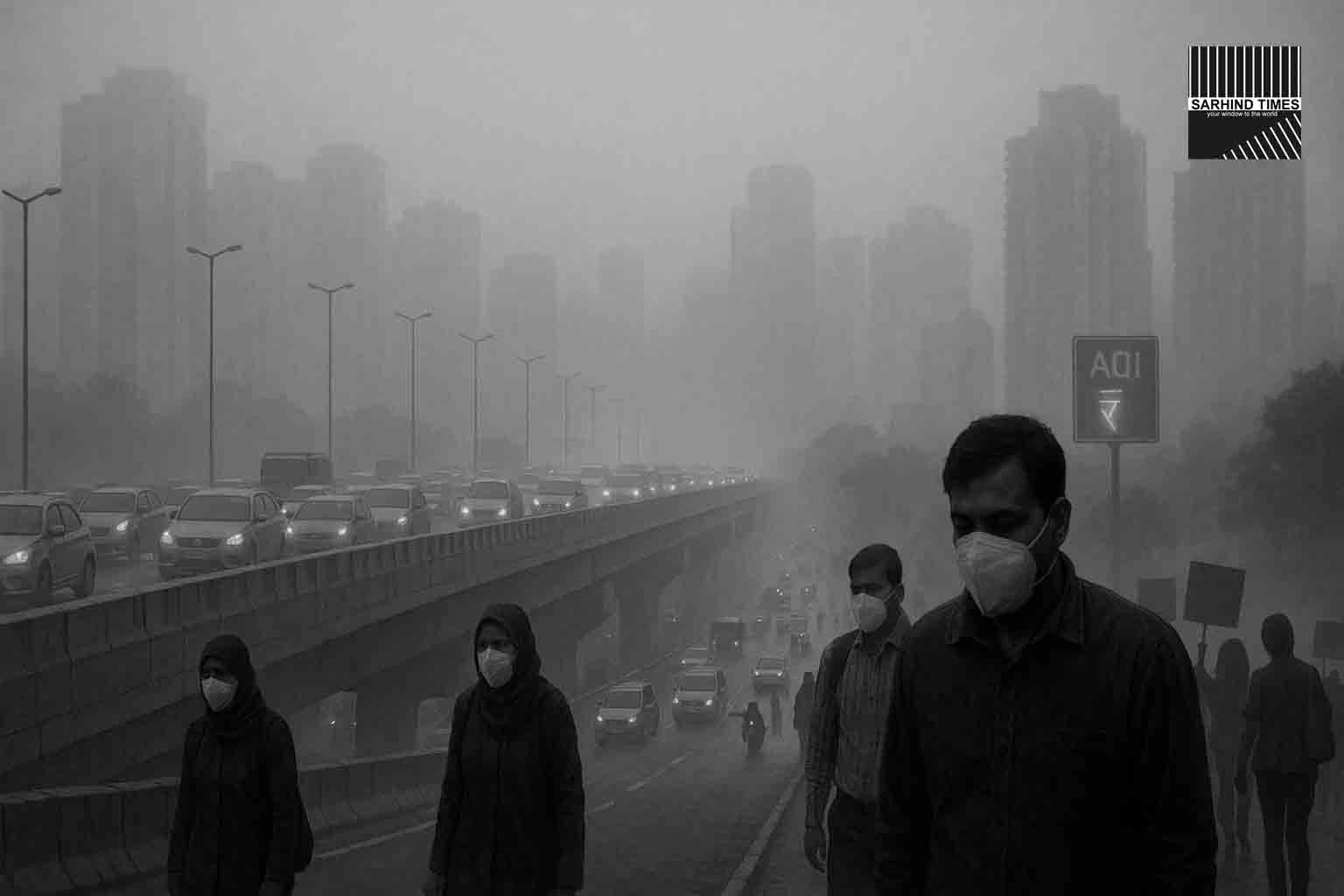By Sarhind Times NCR Correspondent
Noida, October 3:
After a relatively cleaner September, Noida’s air quality index (AQI) dipped into the ‘poor’ category mid-week, with levels peaking at 227 before gusty southeast winds pushed readings back to a ‘moderate’ 136.
Data from the India Meteorological Department (IMD) and Indian Institute of Tropical Meteorology (IITM) indicated that the decline was driven by calm conditions, low ventilation, and particulate build-up. While Greater Noida and Ghaziabad stayed in the ‘moderate’ range, experts caution that the situation could deteriorate again under post-rain stagnation conditions.
The Commission for Air Quality Management (CAQM) has kept a close watch but refrained from invoking the Graded Response Action Plan (GRAP), citing forecasts of continued moderate dispersion until October 5. However, officials have urged local authorities to suppress road dust, enforce tarpaulin covers at construction sites, and intensify mechanical sweeping as preventive measures.
🌫️ AQI numbers: What they mean for Noida
- Poor AQI (227): Sensitive groups at risk; respiratory discomfort possible for children, elderly, and those with lung conditions.
- Moderate AQI (136): Acceptable for most, though mild irritation possible for vulnerable groups.
- Forecast: AQI likely to remain moderate until October 5, with a risk of slipping back if winds weaken.
Dr. Neeraj Gupta, a pulmonologist, noted:
“Even a brief stay in the ‘poor’ zone can affect asthmatics and those with chronic bronchitis. Masks and indoor purifiers should be standard in NCR households by now.”
📉 Why the dip happened
Meteorologists explain that low wind speed and stagnant air caused pollutants to remain trapped close to the surface. Vehicular emissions, construction dust, and increased festive season mobility compounded the problem.
- September respite: Cleaner conditions were seen last month due to stronger monsoon ventilation.
- October challenge: With retreating monsoon and festive activity, particulate matter tends to spike.
- Post-rain risk: Once showers subside, humidity locks in pollutants, reducing dispersion.
🚧 Construction and festive activity under scanner
The NCR is entering a high-activity phase:
- Construction projects: Metro extensions, highways, and housing towers generate massive dust. Despite CAQM’s tarpaulin and water-sprinkling directives, compliance is patchy.
- Festive mobility: Navratri shopping, Dussehra, and Diwali traffic are expected to increase vehicular load significantly.
- Cracker sales: Although restrictions exist, illegal firecracker use remains a recurring AQI disruptor.
🏛️ What CAQM and GRAP mean for NCR
The Commission for Air Quality Management (CAQM) oversees pollution control across Delhi-NCR. Its enforcement tool, the Graded Response Action Plan (GRAP), activates stage-wise curbs depending on AQI levels:
- Stage I (‘Poor’): Dust suppression, mechanised sweeping, tarpaulin covers at construction sites.
- Stage II (‘Very Poor’): Ban on diesel generators, strict industrial monitoring.
- Stage III (‘Severe’): Halting construction, restrictions on heavy vehicles.
- Stage IV (‘Severe+’): Total shutdown of non-essential industries and travel advisories.
Though AQI touched ‘poor’, CAQM did not invoke GRAP, banking on favourable winds.
🏙️ The bigger NCR picture
Delhi NCR’s struggle with pollution is systemic:
- Vehicular contribution: Around 40% of PM2.5 in winter months.
- Dust and construction: Nearly 30% of load, worsened by lax site management.
- Stubble burning: Seasonal spikes from Punjab & Haryana loom ahead.
- Geography: Landlocked terrain traps pollutants unlike coastal cities.
📊 Citizen experiences
- Sakshi, 26, Noida Sector 62: “I felt breathless during my morning run when AQI was 227. I had to cut my workout short.”
- Rohit, 52, Asthmatic: “We immediately switched on our air purifier when the AQI alerts flashed on my phone.”
- School parent forum: Petitioned Noida authorities to issue outdoor activity advisories for children during AQI spikes.
🌍 Global comparisons
Cities with recurring air quality issues show contrasting management:
- Beijing: Aggressive bans on coal plants and seasonal industrial shutdowns.
- Los Angeles: Traffic emission control through catalytic converters and smog alerts.
- Paris: Vehicle rationing during high-smog days.
Noida, experts argue, needs real-time enforcement and citizen awareness, not just seasonal band-aids.
🗣️ Expert commentary
- Urban planner: “Dust control is the low-hanging fruit, but enforcement is weak.”
- Environmental scientist: “NCR cannot rely only on weather. We need structural reforms—mass transit upgrades, electric vehicle push, and strict construction norms.”
- Resident activist: “We have laws, but they remain on paper. Citizens must pressure authorities for accountability.”
📰 Conclusion
Noida’s brush with ‘poor’ air this week is a warning shot before the full-blown smog season of November. While favourable winds temporarily cleaned the air, pollution drivers remain firmly in place.
Unless CAQM and civic bodies move from reactive firefighting to proactive enforcement, the NCR’s annual winter air crisis will continue. For residents, the message is clear—stay alert, mask up, and push for accountability.
#Noida #AirPollution #AQI #CAQM #NCR






















+ There are no comments
Add yours